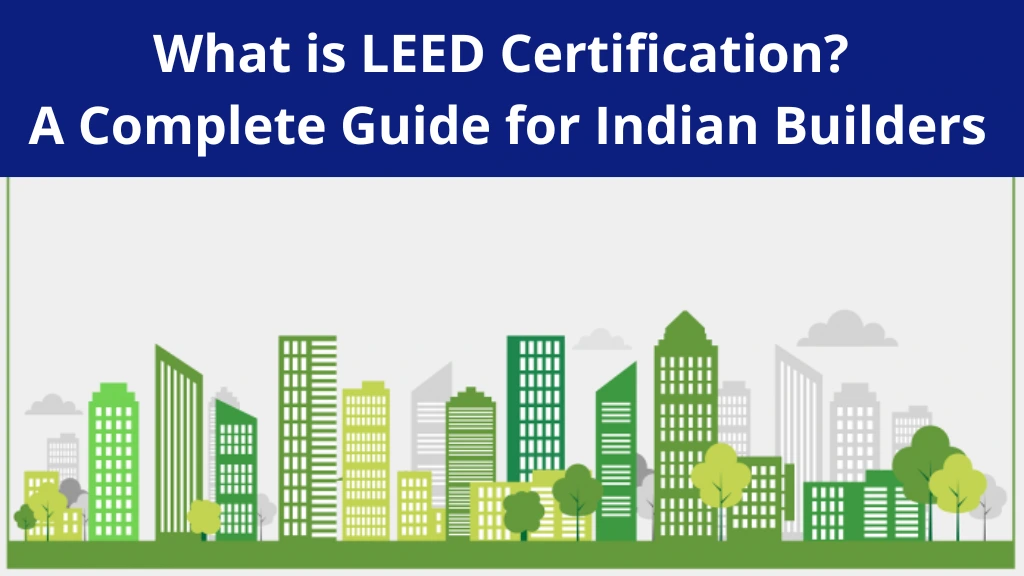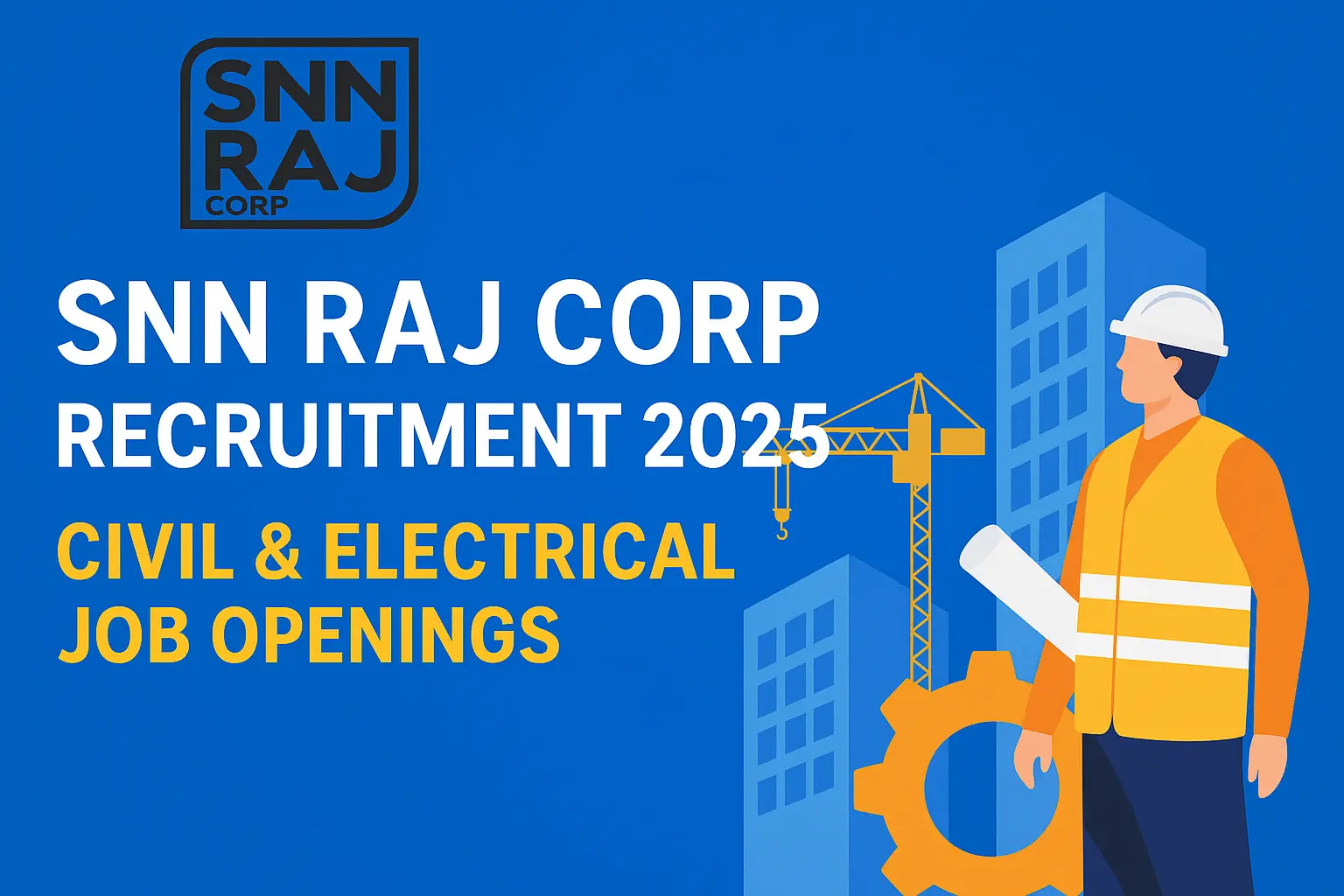What is LEED Certification? : The most popular green building certification system in the world is LEED (Leadership in Energy and Environmental Design). LEED is a rating system created by the U.S. Green Building Council that helps people build, design, and operate healthier and more prosperous buildings.
Obtaining LEED certification for Indian builders is a commitment to sustainable construction, environmental responsibility, and energy efficiency. That’s not only of value to the market but could help address critical environmental concerns around resource depletion, energy consumption, as well as greenhouse gas emissions.
In this guide, we explore the importance, process, and impact of LEED certification on Indian builders and the benefits and drawbacks.
Significance of LEED Certification for Indian Builders
1. Global Recognition
It is a program that benchmarks the world for sustainable development and certified LEED projects are globally recognized as benchmarks of sustainability. For Indian builders, it means doors open to international markets, partnerships, and investment opportunities.
2. Environmental Responsibility
India is among the fastest urbanizing countries in the world and carbon emissions from construction play a significant part. Because LEED certification offers a way for builders to align with global sustainability goals and cut their environmental footprint, it is considered a beneficial incentive for improving their products.
3. Enhanced Marketability
Higher market value and more appeal to eco-conscious buyers, tenants, and investors are advantages for a LEED-certified building. It’s a brand that’s committed to sustainability.
4. Government Initiatives Compliance
The LEED framework is very Indian government policy compliant, for instance, the Energy Conservation Building Code (ECBC) and incentives for green building. Meeting these standards means builders can gain an advantage.
5. Operational Cost Savings
LEED-certified buildings, in general, consume less energy and water so their utility bills are lower over time.
What Does LEED Certification Cover?
LEED certification evaluates a building’s environmental performance in the following categories:
1. Sustainable Sites
It focuses on reducing a building’s impact on ecosystems and promoting sustainable land use.
2. Water Efficiency
Strategies that promote water consumption reduction and recycling of the water resource.
3. Energy and Atmosphere
Fosters energy-efficient systems, use of renewables, and greenhouse gas reduction.
4. Materials and Resources
Measures use of sustainable, recycled, locally sourced wherever possible.
5. Indoor Environmental Quality
Better air quality, natural lighting, and thermal comfort to improve occupant well-being.
6. Innovation
It rewards good and innovative design over the standard requirements.
Levels of LEED Certification
The certification is awarded at different levels based on the points a building earns during evaluation:
- Certified: 40–49 points
- Silver: 50–59 points
- Gold: 60–79 points
- Platinum: 80+ points
The levels reflect how much of the building was built with LEED standards.
Process for LEED Certification in India
1. Project Registration
- To register a project, builders need to fill in the project details on the LEED website.
- Apply for a license, and depending on the size and type of the project, pay a registration fee.
2. Planning and Documentation
- Included in the design, construction, and operation plans is the integration of LEED criteria.
- Document materials, systems, and strategies implemented.
3. Application Submission
- Application and necessary documentation should then be submitted to a USGBC or Green Business Certification Inc (GBCI).
- The LEED standards are applied, and points are awarded for adherence to the same.4. Review and Assessment
5. Certification Awarded
- Then the project obtains a certification level if it passes the evaluation.
Benefits of LEED Certification for Indian Builders
1. Competitive Edge
- Builders in the real estate market benefit from the competitive nature of the sector with the diligence of LEED certification as its unique selling point.
2. Reduced Construction Costs
- Initially considered to be expensive, sustainable practices enable long-term savings by consuming fewer resources and resulting in lower maintenance costs.
3. An increase in Occupant satisfaction
- Building occupancy rates are enhanced by buildings with improved indoor air quality, lighting, and thermal comfort.
4. Access to Incentives
- In India, there are tax rebates, expedited approvals, and other incentives for green buildings in states like Maharashtra and Karnataka.
5. It is a contribution to Sustainable Development Goals (SDGs).
- Alignment with the SDGs is especially with India’s SDGs such as affordable and clean energy, sustainable cities, and climate action.
Challenges of LEED Certification in India
1. High Initial Costs
Small-scale builders can find the certification process and implementation of sustainable materials and technologies expensive.
2. Limited Awareness
The fact is that many of those builders and developers in India who are not using LEED certification are still unaware of how or what benefits it offers.
3. Skill and Knowledge Gaps
Barriers to adoption include a lack of trained professionals and knowledge of what sustainable construction practices are.
4. Compliance and Documentation
Compile and submit detailed documentation to process which takes time and is difficult.
5. Maintenance Requirements
To sustain the standards required for LEED certification requires continuous monitoring and continuing investment in building maintenance.
LEED Certification vs. IGBC Certification
Builders in India compare LEED certification with the Indian Green Building Council (IGBC) certification. While both promote sustainability, they differ in their origin and focus:
| Aspect | LEED Certification | IGBC Certification |
| Administering Body | USGBC/GBCI | Indian Green Building Council |
| Scope | International | Indian Context |
| Categories | More rigid and globally uniform | Flexible and region-specific |
| Cost | Generally higher | Relatively affordable |
Builders targeting global recognition often prefer LEED, while IGBC is suited for localized projects.
Government Initiatives Supporting Green Construction in India
- National Mission on Sustainable Habitat (NMSH)
- It promotes energy efficiency and sustainable practices in urban planning and housing.
- Energy Conservation Building Code (ECBC)
- Defines standards of energy performance for buildings.
- State-Level Incentives
- Also, Maharashtra, Telangana, and Haryana offer benefits including reduced property tax and fast-tracked building approvals for green buildings.
- Smart Cities Mission
- Offers green construction in 100 smart cities across India.
Conclusion
Indian builders have committed to sustainability, energy efficiency, and environmental responsibility through LEED certification. There are many benefits it provides, from cost savings to market differentiation and also compliance with global and national standards. The drawbacks are the high initial costs and documentation, but the long-term benefits are that much greater. The greening of India will depend on the LEED certification which will not only lead India towards a greener future but will also help to transform the construction industry into a sustainable and eco-friendly industry.
Read More:
How to Use Local Materials for Affordable Construction in Rural India? https://civilinfohub.com/fly-ash-ggbs-in-ready-mix-concrete/
FAQs What is LEED Certification
1. Is it a must that India becomes LEED certified?
LEED certification is not mandatory. There is, however, an increasing preference for use by developers interested in sustainable and marketable buildings.
2. What is the cost of LEED certification in India?
Prices will vary depending on the size and type of the project. The registration fees vary from $900 to $1200, and the certification fees vary according to the level of certification you seek.
3. Is it possible for residential buildings to earn LEED certification in India?
Sure, it is just possible to have a LEED-certified residential building; depending on how they follow the required standards of sustainability and energy efficiency.
4. What’s the amount of time to get LEED certified?
Typically it takes several months for the process to walk through because the project is not necessarily done as ready to evaluate at the onset.
5. How many LEED-certified buildings are there in India?
One notable example are the ITC Green Centre in Gurgaon and Suzlon One Earth Campus in Pune.










